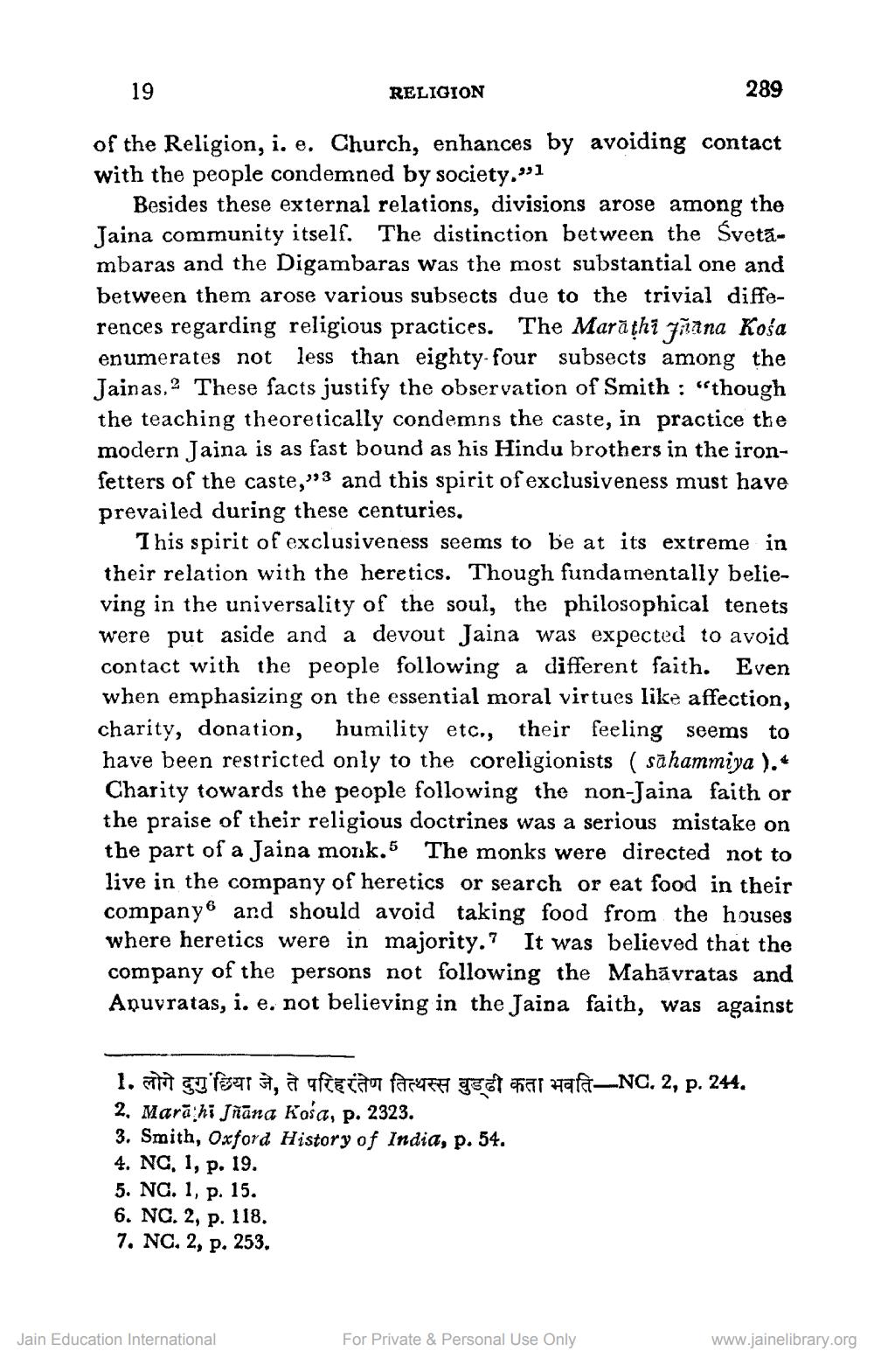________________
19
RELIGION
289
of the Religion, i. e. Church, enhances by avoiding contact with the people condemned by society."
Besides these external relations, divisions arose among the Jaina community itself. The distinction between the Svetambaras and the Digambaras was the most substantial one and between them arose various subsects due to the trivial differences regarding religious practices. The Marāthi piana Koša enumerates not less than eighty-four subsects among the Jainas,2 These facts justify the observation of Smith : "though the teaching theoretically condemns the caste, in practice the modern Jaina is as fast bound as his Hindu brothers in the ironfetters of the caste,"3 and this spirit of exclusiveness must have prevailed during these centuries.
This spirit of exclusiveness seems to be at its extreme in their relation with the heretics. Though fundamentally believing in the universality of the soul, the philosophical tenets were put aside and a devout Jaina was expected to avoid contact with the people following a different faith. Even when emphasizing on the essential moral virtues like affection, charity, donation, humility etc., their feeling seems to have been restricted only to the coreligionists ( sāhammiya ).* Charity towards the people following the non-Jaina faith or the praise of their religious doctrines was a serious mistake on the part of a Jaina monk.5 The monks were directed not to live in the company of heretics or search or eat food in their company and should avoid taking food from the houses where heretics were in majority.? It was believed that the company of the persons not following the Mahāvratas and Apuvratas, i. e. not believing in the Jaina faith, was against
1. n go'feara, a afecta a goat far hafa—NG. 2, p. 244. 2. Marā hi Jñāna kosa, p. 2323. 3. Smith, Oxford History of India, p. 54. 4. NC, 1, p. 19. 5. NO. 1, p. 15. 6. NC. 2, p. 118. 7. NC. 2, p. 253.
Jain Education International
For Private & Personal Use Only
www.jainelibrary.org




